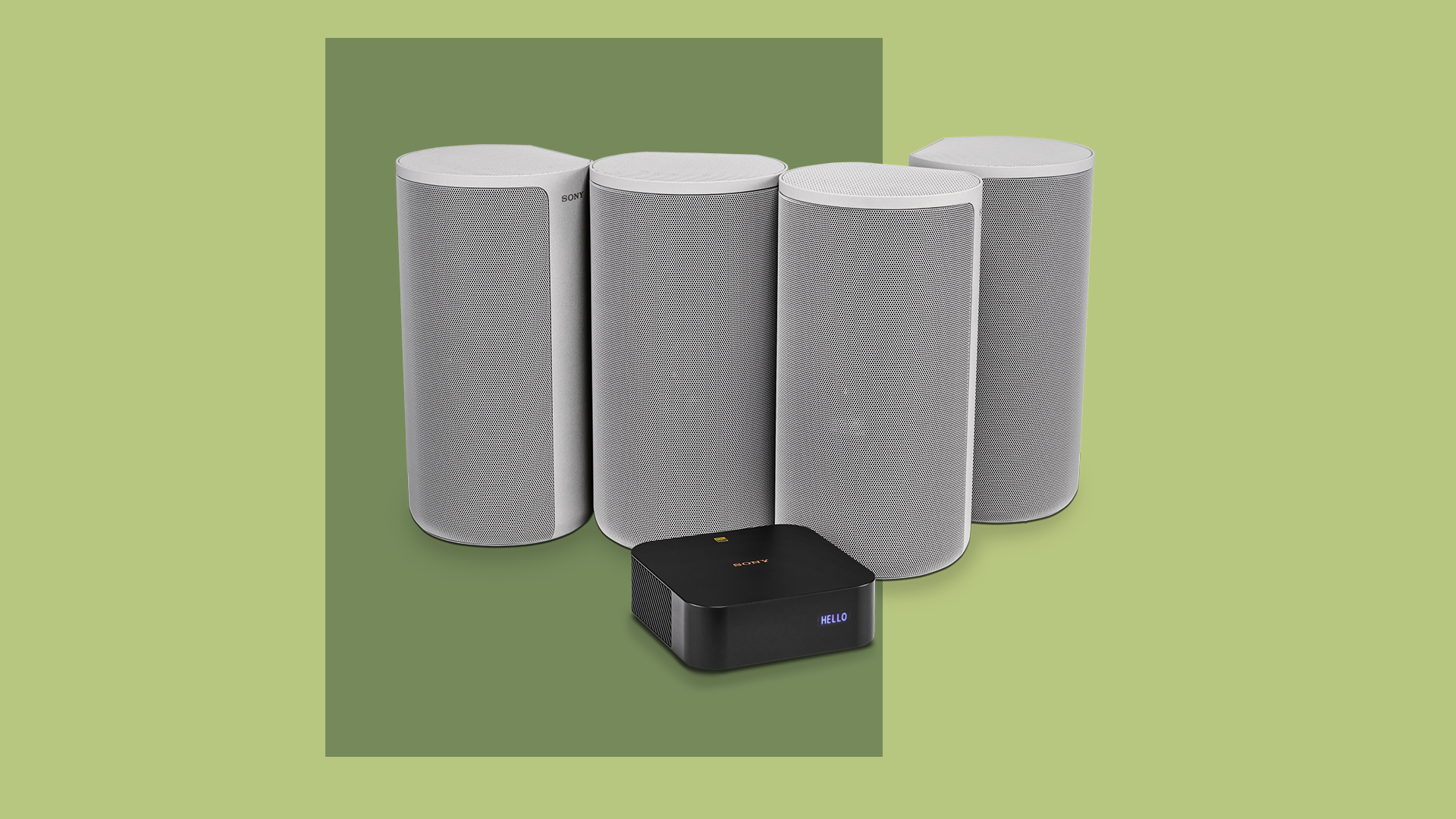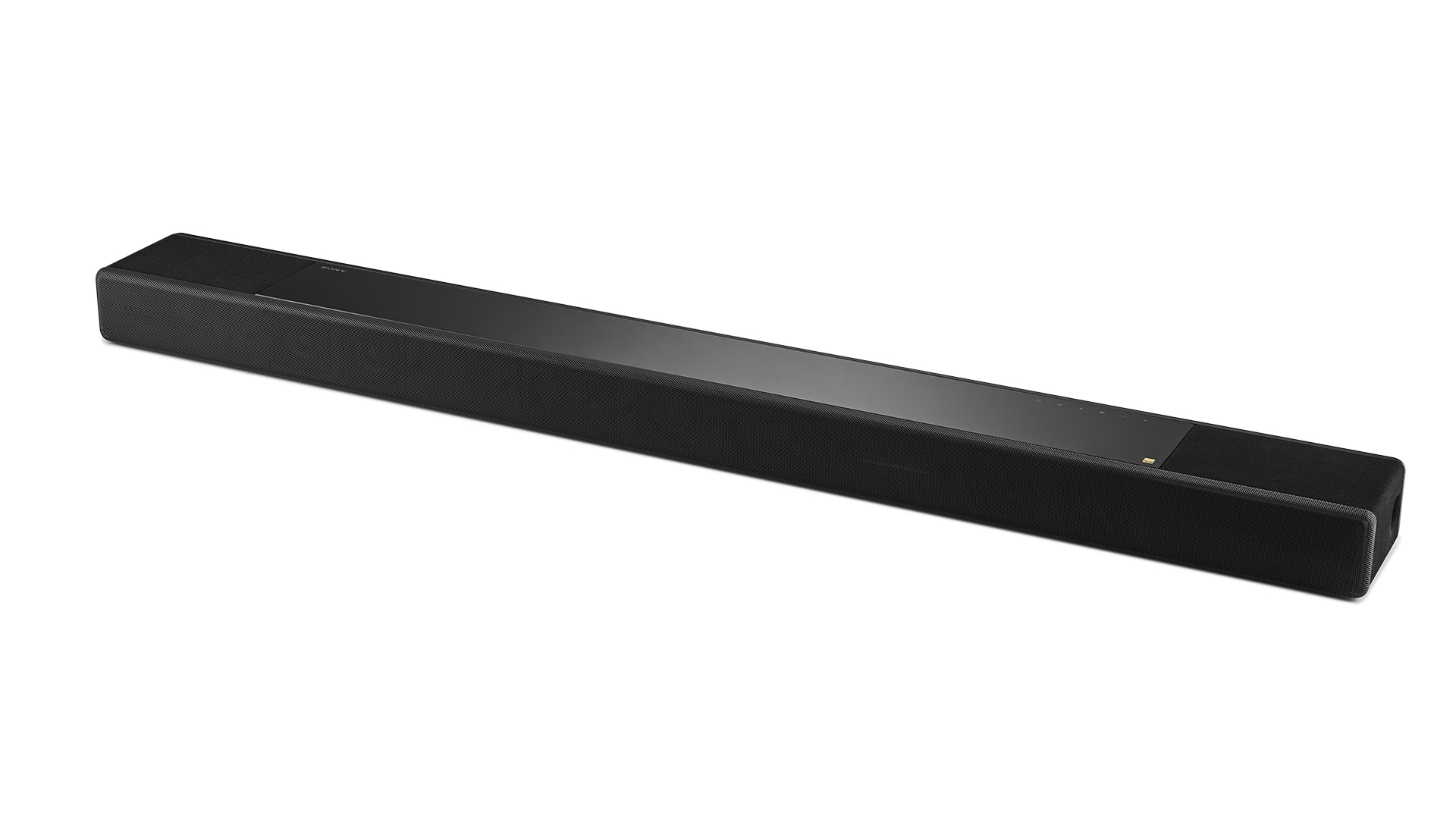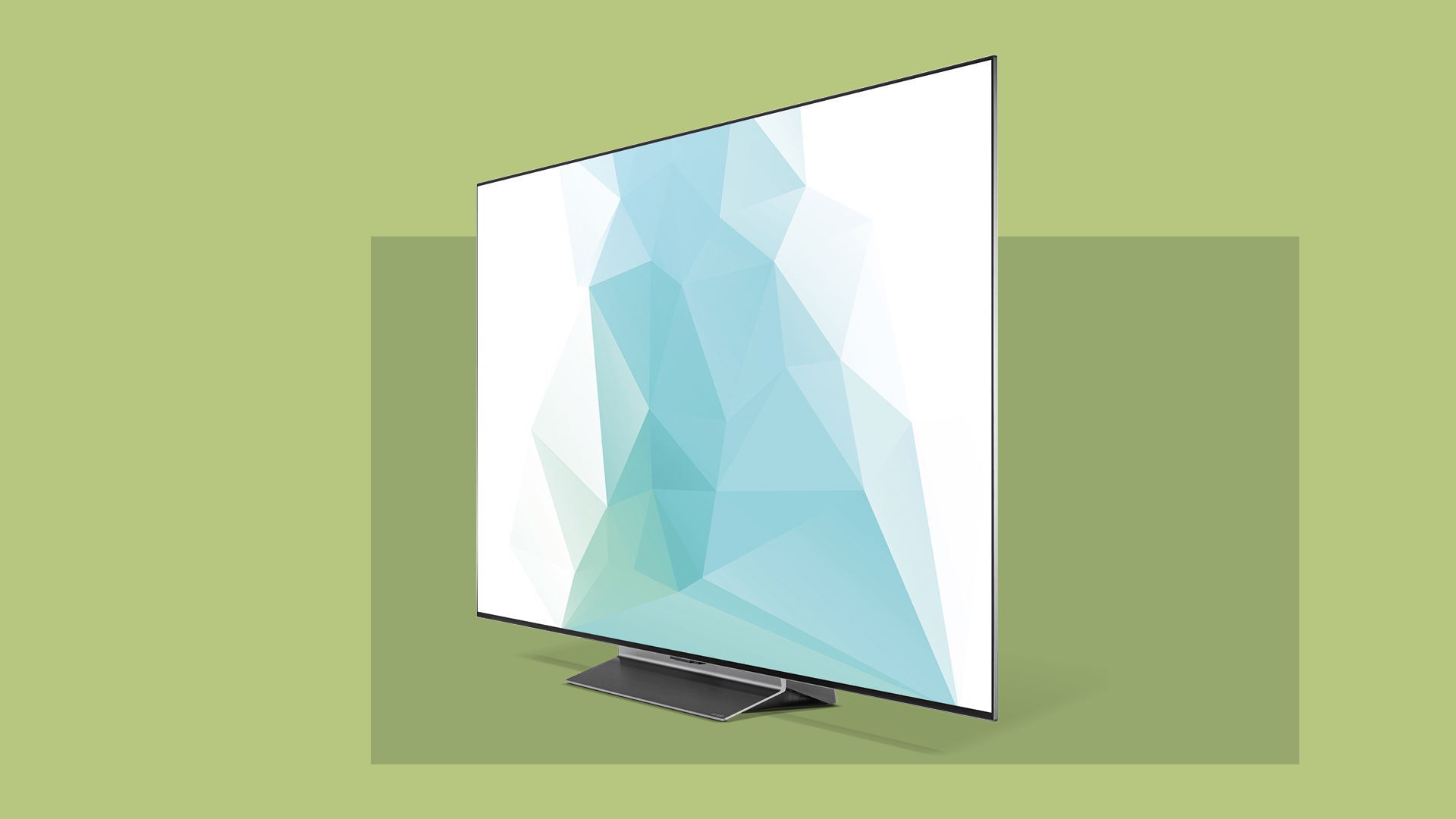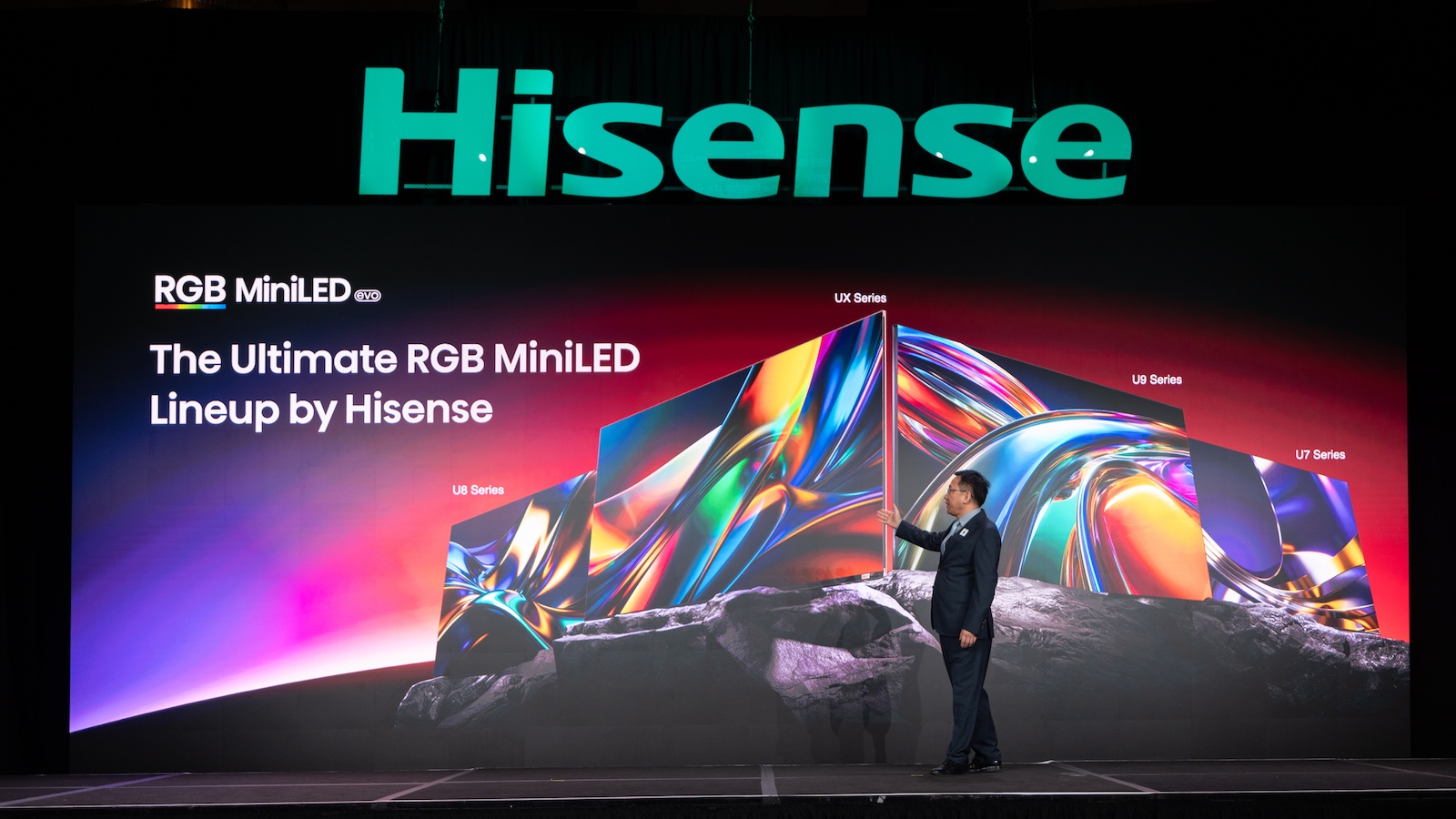LG's fantastic C2 OLED TV stars in this simple yet stunning Dolby Atmos AV system
A fantastic surround sound system featuring LG and Sony

There are a few ways to build a Dolby Atmos home theatre system. The best way (in our opinion) is to go the all-singing and all-dancing route, with a full-blown surround sound package, including overhead speakers (or upfiring speaker modules) for that full-on immersive effect.
But for this AV system build, we've decided to serve up two slightly different options., both built around an Award-winning, app-packed, C2 OLED TV from LG.
Our first choice of partner isn't a soundbar, nor is it what we'd consider a traditional Dolby Atmos speaker package.
In fact, the Sony HT-A9 is perhaps more accurately described as the inverse of a soundbar, having as it does no centre speaker at all – merely what look like four satellite speakers connected to your TV via a clever little box of techno gubbins.
Alternatively, if accommodating extra speakers is a little tricky, we've got a simple one-box solution in the shape of another Sony product, in this case, the all-conquering HT-A7000 Dolby Atmos soundbar.
The system
TV: LG OLED65C2 (£1699 / $1699 / AU$3450)
'Soundbar': Sony HT-A9 surround system (£1799/ $1799 / AU$2499)
Total: £3498 / $3498 / AU$5949
or
The latest hi-fi, home cinema and tech news, reviews, buying advice and deals, direct to your inbox.
TV: LG OLED65C2 (£1699 / $1699 / AU$3450)
Soundbar: Sony HT-A7000 soundbar (£1099 / $1199 / AU$1499)
Total: £2798 / $2898 / AU$4949
Surround system: Sony HT-A9

The HT-A9 is a standalone system, similarly priced to several flagship soundbar packages, some of which also include satellite speakers.
You can place the four speakers around your room without needing to worry nearly as much about positioning as you would in a traditional 5.1 system. Set-up is straightforward thanks to the automated calibration, and we were impressed in our review with how good the system sounded with the speakers in a variety of unlikely positions. You can also experiment with the extra manual modifications to adjust the overall height of the soundfield or to shift it horizontally if your TV is positioned off-centre – it all adds up to deliver excellent flexibility.
At the heart of the speaker system lies a control hub with HDMI connectivity, including eARC and pass-through that supports 4K@60fps and HDR in the Dolby Vision, HLG and HDR10 formats. The party piece is that all the speakers connect to the hub wirelessly (although they do still require hardwired power).
Believe us, we were sceptical before we heard this sound solution, and we tried rather hard to catch it out. The A9 is well specified for the various codec options, with Dolby Atmos (in the Digital+ and TrueHD formats), DTS:X, LPCM, hi-res wireless audio and Sony 360 Reality Audio. It’s a really impressive, user-friendly option that will do a terrific job for many people.
Soundbar: Sony HT-A7000

It is, however, unconventional and expensive, so may not be for everyone; which is why we suggest, as a wonderful alternative, the HT-A9’s sibling soundbar, the Award-winning HT-A7000. This is a Dolby Atmos soundbar that can handle things beautifully all on its own, without the need for extra satellite speakers, subwoofers and the like – although you can add those things at a later date, if you so wish.
This 7.1.2 slab of sound packs two up-firing speakers, two beam tweeters, five front-facing drivers and a built-in dual subwoofer into a single chassis. As with the HT-A9, set-up and room calibration for the A7000 are a breeze, as is connecting to streaming services such as Spotify Connect, Apple AirPlay 2, Chromecast, and integration into a multi-room system – with Amazon Alexa, Apple HomeKit and Google Home all supported.
Sony has used a combination of driver placement and psychoacoustic techniques to enhance the width and height of the soundstage, whether you are watching immersive content or not; and it works very well. Alongside the upward drivers, there is the company’s Vertical Surround Engine (VSE), which up-mixes standard content to make use of the height channels. But key to the A7000’s performance are the wide-spaced beam tweeters, which channel audio through a series of flute-like chambers, and Sony’s S-Force Front Surround Technology, which is engaged when ‘Cinema’ and ‘Standard’ sound modes are selected. So effective and transparent is the performance of these wide tweeters that while watching the opening of Gravity in Dolby Atmos we repeatedly check there isn’t a speaker immediately to our side.
TV: LG OLED65C2

You’ll notice we haven’t yet mentioned the TV in this system. That’s because there’s no real need to say too much about LG’s remarkable OLED65C2; the fact that it is our TV Product of the Year tells you all you need to know. The well-specced C2 was the performance-per-pound champ of 2022.
While we wait to get our hands on LG's 2023 TV line-up, it's currently the TV that we'd recommend to most people, thanks to its combination of outstanding performance and price. It delivers a wonderfully punchy yet natural image, with excellent contrast and dark detail. It also has all the apps you need to make the most of both Sony sound systems.
Verdict
Combined, the superb LG and whichever of our two suggested sound solutions you plump for – the HT-A9 or more conventional soundbar, the HT-A7000 – that best suits your space and budget will make a stunning system.
Both offer greater convenience than a traditional surround sound set-up and both also deliver exceptional sound quality for their asking prices, so no matter which route you go down, you won't be disappointed.
MORE:
Denon, Panasonic and Wharfedale power this hugely talented and traditional home cinema system
How to combine stereo and surround sound in one AV system
These are the best TVs: budget to premium
And the best soundbars you can buy

Jonathan Evans is the editor of What Hi-Fi? magazine, and has been with the title for 18 years or so. He has been a journalist for more than three decades now, working on a variety of technology and motoring titles, including Stuff, Autocar and Jaguar. With his background in sub-editing and magazine production, he likes nothing more than a discussion on the finer points of grammar. And golf.
